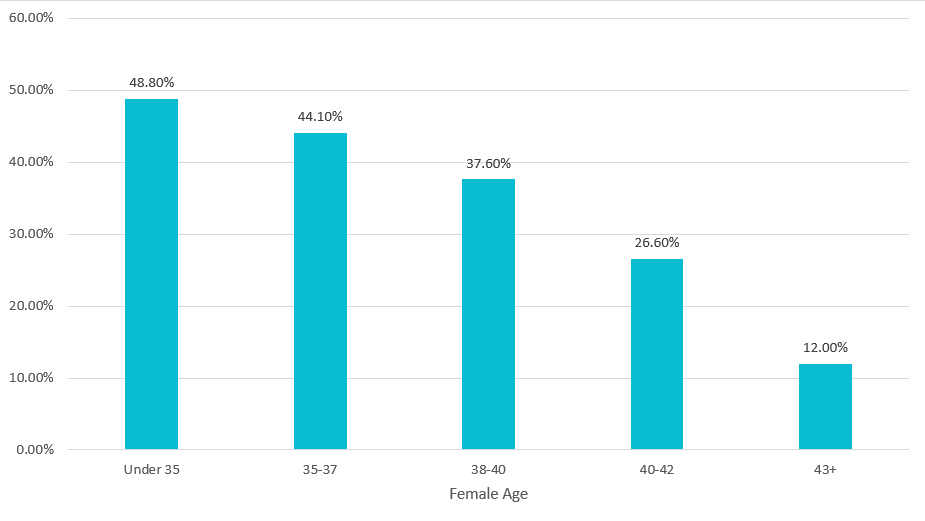IVF Success Rates in The United States
IVF Success Rate data is collected from the CDC’s 2018 Fertility Clinic Success Rates report.
IVF Options reports on live birth success rates per transfer. This tells you how many cycles with transfers result in a baby. In other cases, there are cycles where an egg is retrieved but there are no embryos to transfer or the cycle is cancelled for whatever reason. Those two scenarios are excluded in this number.
IVF (Live Birth) Success Rates by Age

Why Are IVF Success Rates Important?
Fertility patients undergo IVF treatment in effort to get pregnant and have a baby. However, getting pregnant and having a baby by IVF is not guaranteed. In fact, under the age of 35 the national average success rate is 48.8%. That means, more than 50% of the time, an IVF cycle is not successful.
The result of this is that most patients need to undergo multiple rounds of treatment in order to have a baby. The national average is 2.3 cycles, but no one goes for 0.3 of an IVF cycle. So we would estimate the average patient needs 2-3 IVF cycles in order to get pregnant and have a baby.
With that in mind, the cost of an IVF cycle is not the only thing to consider. It is important to look at both cost and success rates for your age range, when considering when to go for treatment.

